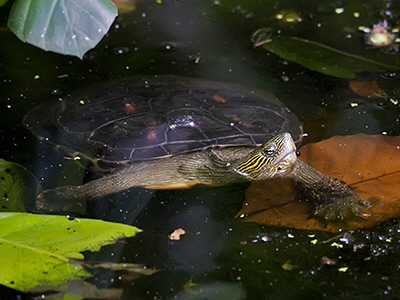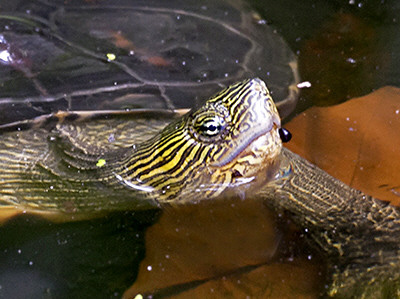
Fig 1

Fig 2
|
Family : GEOEMYDIDAE
Species : Mauremys sinensis
Maximum carapace length : 24 cm
In its native habitat the
Chinese Stripe-necked Terrapin, or Common Thread Turtle, inhabits lowland,
low energy aquatic environments such as marshes, shallow ponds and swamps.
The species sometimes enters the exotic pet trade, and thus released
specimens may be encountered in manmade environments such as rural ponds and
reservoirs.
In the field the species can be identified by the narrow yellow stripes on
the head, neck and legs. The carapace is oval, somewhat flattened and brown
in colour. On each scute there is typically a paler brown or reddish brown
spot. The plastron is yellowish with a dark blotch on each scute.
The species is omnivorous, feeding on aquatic vertebrates such as frogs and
fishes, and a variety of aquatic plants.
Within Southeast Asia the species only occurs in northern Vietnam, but its
range extends to many parts of southern and eastern China, including Taiwan.
Fig 1 : Feral specimen in a freshwater pond at Sungei Buloh, Singapore. This
specimen possesses a reddish brown marking on each scute of the carapace.
Fig 2 : Close-up of the same specimen showing the distinctive narrow, yellow
stripes on the head and neck.
References :
Das, I., 2010. A Field Guide to the Reptiles of South-east Asia. New Holland
Publishers (UK) Ltd.
|